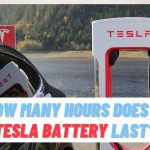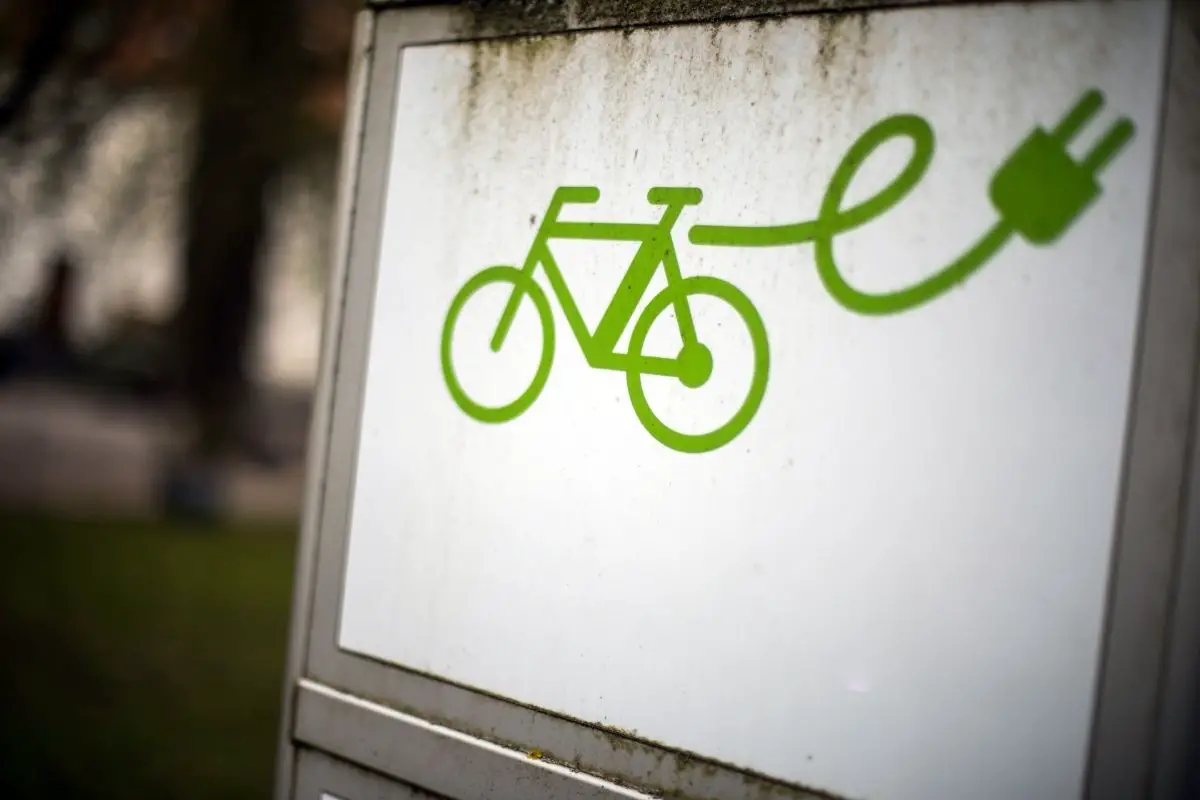Last Updated on March 18, 2022 by
Climate change is on the rise and with it, so is everyone’s interest in cleaner sources of energy.
Solar power has become very attractive in recent years and more and more houses and buildings are installing solar panels as a way to generate clean electricity. So, if you are looking into installing solar panels on your own property or already do, you may have heard something about a Powerwall.

Powerwall is a product produced by Tesla that works along with solar panels to help provide clean energy – how exactly does it work?
If you are interested in installing a Powerwall but not entirely sure what it is or how it works, then keep reading – we have all the information you need to know about Powerwalls right below!
What Is A Tesla Powerwall?
A Tesla Powerwall may not look like much – it is basically a thin white box attached to the side of a wall – but there must be something amazing about it because more and more solar panel users are installing them in their homes.
So, let’s take a closer look at Powerwall and its role in the quest for clean energy.
What Does a Tesla Powerwall Do?
Powerwall is a battery system that stores solar energy. They are installed into houses that feature solar panels and instead of that solar energy being sold back to the main power grid, it stays stored within the owner’s property.
Basically, Powerwall is a giant battery that is designed to solely store the solar energy produced by solar panels. However, you can always purchase a unit, charge it with energy pulled from the grid, and then use it to store that energy for a later time.
What is the Point of the Tesla Powerwall?
The reason why Powerwalls were made was so property owners who installed solar panels would have an alternative way to use the solar energy their panels produced.
Before, solar energy produced by privately owned solar panels would be sold to the country’s main power grid only for the owner to buy that power back at a higher cost when they used electricity in their own home.
Powerwall stores that clean energy instead of selling it, saving it as a back-up for power outages or other alternative ways of use. Even if you charge the Powerwall using energy from the grid, it will still work as a back-up power source in an outage or during times when energy costs are high.
Is it Worth Getting a Powerwall?
Solar panels and Powerwalls are expensive which instantly drives a lot of potential users away, but in a world where we must be more aware of how we create and use power, a clean energy source like solar power is increasingly becoming more attractive.
Powerwalls are a great way for solar panel owners to have more control over how they use the solar energy their solar panels create. It can help save money on energy bills and be used as a back-up power source in power outages. If you live in a remote area or somewhere that regularly sees power outages, this can be a huge help.
Powerwalls are also popular for places where energy costs a lot of money to buy. The popular case study is Hawaii, where the inhabitants of the islands pay up to three times as much as those who live on the mainland. Generating their own electricity and using it can save a lot of money on their energy bills.
How Does Tesla Powerwall Work?
So, now you know what a Tesla Powerwall does but how exactly does it work?
Well, just like a normal battery!
Powerall is basically a giant battery that is charged up using the power generated from your solar panels. Solar panels convert sunlight into electricity that is then sent down to the Powerwall to be stored until that power can be used. You can then control when and where you use that energy either through a panel or through an app. Save it for a power outage, when power costs are high, or use it every night – the choice is yours.
How Much Power Does a Powerwall Hold?
Powerwall can store up to 13.5 kWh (kilowatt-hour) of DC (direct current) power and it will maintain at least 10% of that as a reserve so it can power up to recharge when there is enough sunlight. This means that most households can use 12.2 kWh of AC power from their Powerwall.
Kilowatt-hour is how energy consumption is measured and is equal to the amount of energy used to keep a 1,000 watt appliance running for precisely one hour. Every electrical appliance you have consumes a certain amount of kWh and some more than others.
For example, to run a 50 inch LED television would consume on average 0.016 kWh per hour. With a Powerwall, you can run the same TV all night purely on the solar energy your solar panels have produced.
However, the average dishwasher consumes around 2kWh per load so you can only run your dishwasher 6 times on your stored solar energy at a maximum.
How Many Solar Panels Does it Take to Charge a Tesla Powerwall?
When it comes to charging your Tesla Powerwall, how fast it takes to fully charge all comes down to your solar panels. The more solar panels you have, the more energy you will produce and the sooner your Tesla Powerwall will fully charge.
However, the issue with solar panels is that they are inconsistent. They will obviously generate more energy on sunny days than on cloudy days so no matter how many solar panels you have, your Powerwall will charge to different levels every day.
Technically, you only need one solar panel to fully charge a Tesla Powerwall but the number will vary depending on factors like your location, load, climate, the amount of roof space on the property, etc. Tesla will send an energy professional when it’s time to install your solar panels and Powerwall, so they will give you an estimated number of solar panels depending on what is best for your situation.
If you do the math using average sunshine hours and average efficiency of solar panels, the estimate comes out at around 18 panels to fully charge a Powerwall in a single day- but most average houses can’t fit that many panels on a single roof, and these estimates are very broad.
Can a Tesla Powerwall Work Without Internet?
The way most Tesla Powerwall users monitor and control their Powerwall is through an app, but this means that the Powerwall needs connection to the Internet in order to send that data through.
So, a Tesla Powerwall needs an internet connection or cellular connection to receive software updates and communicate with the app so you can monitor your Powerwall energy. However, it does not require Internet connection to kick into action when there’s a power outage. As long as your Powerwall is set to do so, it will start to use the stored energy it has to power your appliances the moment the sensors detect an outage.
How Long Does A Tesla Powerwall Last?
We all know that batteries only have a certain lifespan – whether it’s how long they can last before they die or how long they last before they fully corrode and stop working, it’s important to be aware of all these details before purchasing. So – let’s find out just how long a Tesla Powerwall lasts.
How Long Can a House Run Off a Tesla Powerwall?
How long it takes for you to run a fully charged Tesla Powerwall down to nothing really depends on your power usage. If you run a lot of appliances (especially high consuming ones like dishwashers or washing machines) then you will obviously run down the power more quickly.
The average house uses around 10kWh in 24 hours, which means that a Tesla Powerwall can run your home for at least a day before it needs to recharge.
How Many Cycles Does a Tesla Powerwall last?
Cycles refer to how often you use your Powerwall ( the process of charging, use, the recharge again) so it’s important to know how many cycles a Tesla Powerwall can last.
According to Tesla, a Powerwall should be able to last 5,000 cycles although due to natural battery degradation, the storage capacity per cycle is expected to shorten over time as it is used more and more often.
How Many Years do Powerwalls last?
Translating cycles to years is tricky because everyone will use their Powerwalls differently. If it only kicks in when you experience a power outage, then it’s very likely that your Powerwall will last forever but if you use it more frequently, degradation will increase over a shorter span of time and you may see your Powerwall become less and less efficient.
Tesla currently have a warranty of 10 years on their Powerwalls which means that if your Powerwall loses 30% of its capacity before those 10 years are up – then you are entitled to a replacement.
So, at the very least, your Powerwall will last 10 years and most likely more.
How Much Does A Tesla Powerwall Cost?
Now, let’s take a look at the big issue around Teslas that concern a lot of potential customers – cost. Even if a Tesla works great and does it’s job beautifully, is it enough to justify how much it costs to install?
How Much Does a Tesla Powerwall Battery Cost?
The Tesla Powerwall battery cost itself is interesting because you are entitled to a tax cut that actually reduces its cost, but the Powerwall is still one of the least affordable solar power storage systems available.
The Powerwall battery is currently priced at around $10,500 for a single unit although buying two units will cost you $8,500 each. Then the price is reduced due to the 26% federal solar tax credit, meaning that a single unit costs only $7,770. However, to get this cut, the Powerwall must be used with solar panels or other form of renewable energy system) to apply. If you want to use the Powerwall as a stand alone power storage unit that pulls its energy from the grid, it will not qualify. The Powerwall must get 100% of its energy from clean, renewable sources.
How Much Does a Tesla Powerwall Cost to Install?
However, the price of the Powerwall battery itself is not the total cost of purchasing a Tesla Powerwall. You will also need to be paid to install the Powerwall and this is where prices can differ greatly.
The price of a Tesla Powerwall installation can vary between $2000 to $8000 depending on how much will need to be done. You will be given a quote when Tesla’s team evaluates your home.
This means that the overall cost of purchasing and installing a single Tesla Powerwall can be around $12000 to $16500.
Does a Tesla Powerwall Pay for Itself?
So – is a Tesla Powerwall worth it?
Again, the answer all depends on how you use it. Storing energy and using it when energy costs are high or when there are severe power outages can seriously help you out. It can be more useful in certain situations, especially if your home is situated where you experience frequent power outages.
The average payback of a Tesla Powerwall is at $0.88 per day, which results in the average Powerwall owner saying $320 a year. This means that some Powerwall owners will only payback for their Powerwall after 50 years – but again, this is always subject to change.
Conclusion
So – Tesla Powerwall is one of the most popular solar energy storage units ever and it’s popularity is still growing.
The way it works is that it stores the DC electricity produced by residential solar panels in a battery and uses that power in different ways. Some people use it every night to power appliances and save on bills, others wait until there is a power outage so they can still enjoy utilities like lights and internet access.
Overall, the Tesla Powerwall acts as a big battery that can come in handy in lots of different ways.
- Why Electric Vehicles Are Not Popular - January 29, 2023
- How Long Do Tesla Batteries Last Per Day? Battery Facts - January 25, 2023
- Do Electric Vehicles Have Air Conditioning? - December 21, 2022










